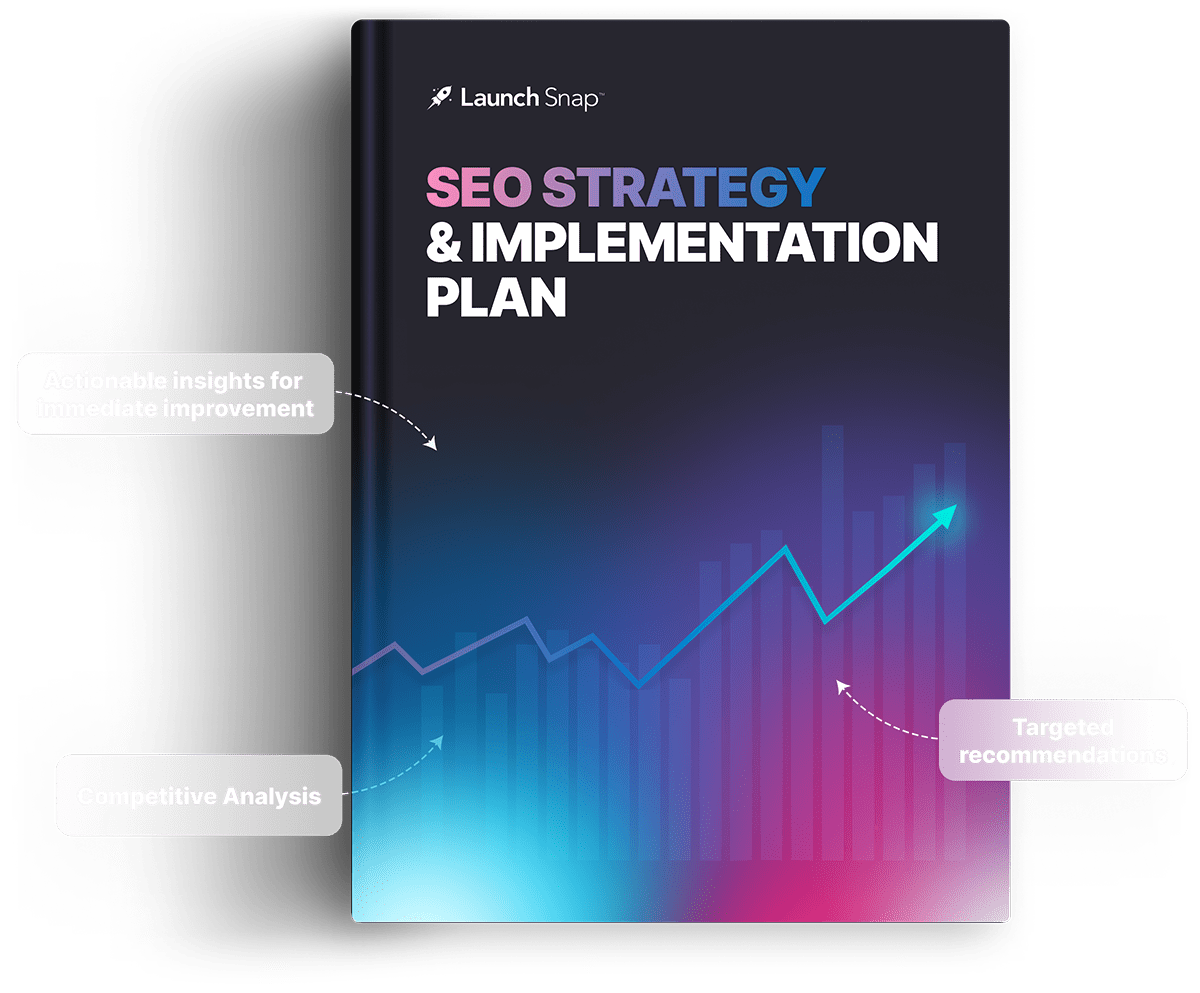Key Elements of a Successful B2B SEO Strategy
Search engine optimization, or SEO for short, isn’t just one thing. It’s dozens of things that come together with a common goal of boosting organic traffic by showing up in the search results of Google, Bing, Yahoo, etc. Some elements of a SEO are very straight-forward, such a technical SEO, while others are require research and analytical thinking. This article aims to outline the main elements of a successful B2B SEO Strategy.
What Does B2B SEO Mean?
B2B SEO stands for Business-to-Business Search Engine Optimization.
What is B2B SEO?
B2B SEO is the process of improving online visibility through industry-specific content and keywords in order to connect businesses with professional audiences, decision-makers, and influencers.

What is the Primary Goal of B2B SEO?
The main goal is to attract and engage potential business clients. Specifically that means ranking for search phrases, which drives organic traffic to your site, that you can then capture as a lead, nurture, and, ultimately convert into a sale.
Why is SEO important for B2B Companies?
In addition to establishing a company as a industry authority and building trust, SEO is a way to add qualified leads to your sales funnel.
Tip #1: Goal Targetting
SEO has three main goals but every SEO initiative doesn’t need to be aimed at all three at once. Some initiatives may only be to target one:
- Grow organic traffic
- Increase qualified business leads
- Establish domain authority
What Are the Main Elements of a B2B SEO Strategy?
The main elements of an effective B2B SEO strategy are:
- Keyword Research and Targeting
- Content Marketing
- On-Page Optimization
- Link Building
- Off-Page & Technical SEO
- Local SEO
- Social Media
- Conversion Optimization
- Competitor Analysis
- Email Marketing Integration
- Analytics and Measurement
- Continuous Monitoring and Adaptation
By creating a comprehensive SEO strategy that unites these elements into specific goals, you can boost your online visibility, attract relevant traffic, and generate qualified leads.
Keyword Research and Targeting
Once you know your audience and their likely search queries, you can identify which keywords and phrases to target. Ideal keywords are not only relevant but also indicative of the user’s intent. Targeting the right keywords is key to attracting the right type of leads to your site.
- Identify industry-specific and long-tail keywords.
- Focus on problem-solving and decision-making terms.
- Analyze competitor keywords and market trends.
Tip #2: Semantics
Incorporate semantic variations of your targeted keywords to capture a broader range of search queries and intents, enhancing visibility and relevance in B2B search results.
Content Marketing
Your content needs to educate the potential customer and move them through the buyer’s journey from awareness to decision. It should be current, accurate and address their specific business challenges.
- Develop authoritative resources like whitepapers and case studies.
- Regularly update a blog with industry-relevant topics.
- Utilize formats like webinars and guides to provide value.
On-Page Optimization
There are several ways to optimize your content. Anything you can see either on the page or in the search results is considered on-page. Your target phrases should be used strategically in many elements of your content but strike a balance between writing for humans versus bots.
- Optimize meta titles, descriptions, and headers with targeted keywords.
- Implement SEO-friendly URL structures.
- Ensure content is structured for readability and relevance.
Link Building
A backlink profile is one of the most powerful elements of SEO. It’s also one of the hardest to build. At its core, it’s another site vouching for yours by linking to you. But not all links are good and many big players will include a no follow on their link, which won’t help your SEO.
- Acquire backlinks from industry publications and business directories.
- Engage in guest blogging and online community participation.
- Foster partnerships for natural link development.
Tip #3: Quantity vs Quality
Prioritize quality over quantity in link-building efforts; focus on securing backlinks from authoritative, industry-related websites to boost credibility and SEO rankings.
Off-Page & Technical SEO
Technical SEO ensures that your website meets the technical requirements of modern search engines, improving organic rankings. Regular audits can help identify and fix issues that might impede your site’s performance.
- Enhance site speed and mobile responsiveness.
- Secure your site with HTTPS.
- Optimize site structure and internal linking.
Local SEO (If Applicable)
Local SEO is one of the most overlooked aspects of SEO. Many businesses assume they are online and serving a national or global audience. But if you have a physical location, especially one the public can come to or you hold meetings at, you can take advantage of these mostly free opportunities.
- Claim and optimize your Google My Business listing.
- Ensure your contact info is consistent across online platforms.
- Incorporate local keywords into your site’s content.
Social Media
While LinkedIn is the social platform most commonly thought of for a B2B audience, some companies do well on Facebook, Instagram, and WeChat. Cultivating an engaged audience will help drive traffic to your site and support your SEO initiatives.
- Share insightful content and industry news on LinkedIn.
- Participate in relevant social media groups and discussions.
- Use social media to promote blog posts and other valuable resources.
Conversion Optimization
Creating a user-friendly experience, CTAs that are appropriate to the phases of a buyer and optimized landing pages, will help capture the rewards of your search optimization efforts.
- Design clear and compelling CTAs.
- Strategically place lead generation forms on your site.
- Streamline the navigation and user journey to reduce bounce rates.
Competitor Analysis
If you want to stay competitive in SEO, you need to watch your competitors. It will help you adapt, gain valuable insights, and identify new opportunities. At LaunchSnap, we recommend at least one yearly audit of your site and competitors to benchmark your industry.
- Analyze competitors’ keyword strategies and content.
- Monitor their backlink profiles and SEO activities.
- Adapt your strategy based on industry trends and competitor performance.
- Sign up for their newsletters.
Email Marketing Integration
In the same way that adding common search phrases to your content will help it be found, adding these same phrases to your email marketing will help it resonate. It’s basically a 2 for 1. You’ve already done the research, use it over here too!
- Share SEO-optimized content through email campaigns.
- Segment email lists for personalized content delivery.
- Use email analytics to refine your SEO and content strategies.
Analytics and Measurement
While analytics don’t directly affect your SEO, they are essential for understanding how to optimize and pivot. For a more detailed look at the tools used in SEO, take a look at our article “12 Ways to Measure if Your B2B SEO is Working.”
- Track organic traffic and user behavior with Google Analytics.
- Measure conversion rates and assess the effectiveness of CTAs.
- Monitor keyword rankings and backlink profiles.
Continuous Monitoring and Adaptation
In order to get the most our of your SEO, you need to monitor your performance, add fresh content, and stay on top of algorithm updates.
- Regularly update and refresh content to keep it relevant.
- Stay informed about SEO trends and algorithm updates.
- Refine your SEO strategies based on performance data.
Final Thoughts
There’s no way around it, SEO is a lot of work. There’s a lot of moving parts and it requires attention to detail. Furthermore, it’s not something you do one time and then let it ride. It’s a continuous process of analysis, optimization, and adaptation. As elements of your strategies mature and integrate with other marketing tactics, you’ll stay ahead of your competitors and generate lasting results.
Get SEO Results, Faster.
Understanding the components and next steps for B2B SEO is just the start; the real challenge lies in implementation. With our vast experience, LaunchSnap has mastered these processes, allowing us to boost your strategy’s efficiency and effectiveness. Let us save you time and fast-track your company’s SEO success. Contact LaunchSnap today and start seeing tangible results sooner.



